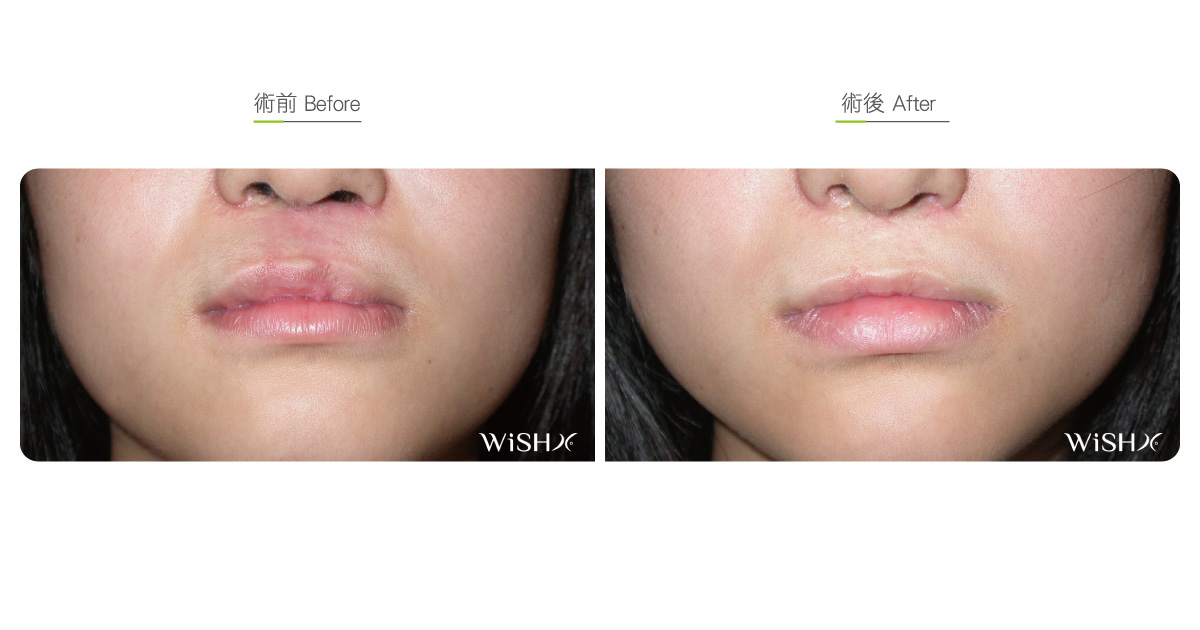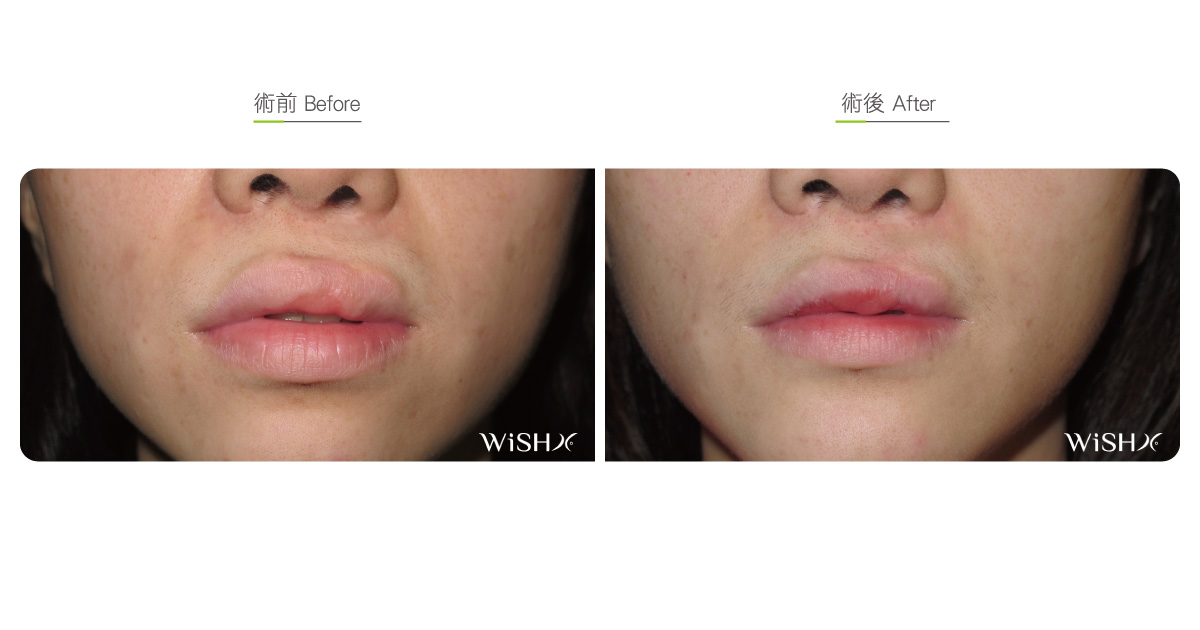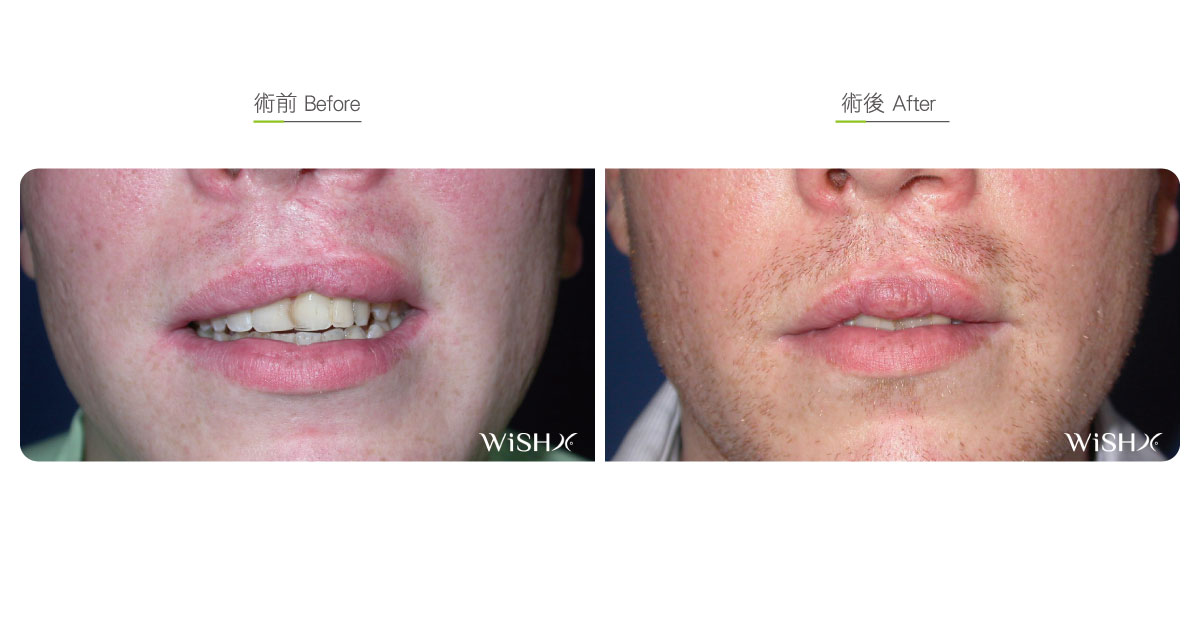Cleft Lip Reconstruction
Upper lip defects and deformities due to congenital cleft lip and palate are not rare. Although such patients have frequently undergone multiple repairs during their childhood, the expansion and development of the facial skeleton and scar tightening derived from prior surgeries lead to gradual deformities of the lip, with unpredictable results. The typical upper lip appearance of cleft lip lacks the central lip bead (procheilon) and presents a chevron-shaped defect. The philtrum usually deviates to the repaired side due to surgical scar contraction, and the affected upper lip shows unevenness and is thinner than the normal side due to skin deficiency and scar stretching. Severe cases result in difficulty in closing the mouth or articulation, so before lip reconstruction, consideration should be given to ascertain whether the relevant structures of cleft lip and palate are corrected prior to repair for the ultimate appearance.
Cleft lip reconstruction is aimed to restore the relatively normal upper lip appearance of patients, so the design and method of the surgery are flexible to adjust in light of the severity of the deformity and defect of patients. Generally, there are two main aspects to be noted. One is the reconstruction of the central procheilon, which utilizes the hypertrophic skin at both sides of the upper lip for V-Y flap transposition (local rotation flap) to sculpt the central lip bead. The other is balancing the symmetry of both sides of the upper lip, which involves the regional resection or reduction of the relatively thick lip flesh and, if necessary, grafting the excised skin to the affected side lip defect to achieve balanced lips at both sides. Moreover, if the upper lip deformity is caused by the stretching of the scar at the philtrum or inside the lips, Z-plasty scar revision should be performed in conjunction with lip reconstruction to attain complete correction and prevent probable secondary deformities.
Surgical conditions
Duration
- Type of anesthesia: IV sedation + local anesthesia
- Type of incision: At the upper lip margin and philtrum deformity area
- Recovery: 3–5 days
- Removal of stitches: No
General instructions
No food and water on the day of surgery
- Avoid smoking, alcohol, and irritating or hard foods for 1 month postoperatively.
- Avoid singing or laughing and other overt mouth opening behaviors for 2 months postoperatively.
Ideal candidates
- Patients with an upper lip defect due to cleft lip and palate
- Those with an upper lip deformity due to scar contracture derived from prior multiple cleft lip and palate repairs.
- Those with an upper lip deformity that may affect language or articulation
- Those with an upper lip defect due to trauma
Possible complications
- Scar contracture
- Autologous tissue shrinkage
- Incomplete correction
Surgical advantages
-
It effectively reconstructs the normal lip appearance of patients with cleft lip and palate.
-
It improves incisor exposure and language disorder.
-
It is a reconstruction surgery with autologous tissues and has long-lasting and natural results.
Surgical drawbacks
-
The upper lip of the patient may become thin due to local flap transposition.
-
Correction results may differ with individual conditions.
-
There may still be recurrent scar proliferation or contracture.



